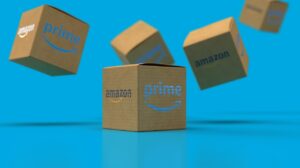Event marketing connects your brand directly with target customers and prospects and gets your message into the community, thereby enabling you to build meaningful, long-term relationships. You can use events as testing grounds for new products and services, gain valuable feedback from attendees, and use that feedback to make better decisions in the future.
While it goes without saying that event marketing is well worth the investment, for this type of marketing to succeed, you must be strategic. Here are seven tips to ensure your next event creates buzz around your brand, engages current customers, and draws in potential leads.
1. Invest in Event Marketing at the Best Time of Year for Your Target Audience
The best time to invest in event marketing is when your target audience is most receptive, typically during your customers’ peak buying season or when they have a special reason for needing your product. For instance, if you’re selling snowboards to young professionals, winter months are ideal.
Similarly, if you’re selling fitness equipment like treadmills and elliptical machines, then aim for November through January when people want to get back into shape after their Thanksgiving splurges. Remember that events set for Q1 have the potential to underperform, as this time of year is the season when most people are digging out of holiday debt.
2. Market to Your Target Audience with Careful Consumer Planning
Make sure that every dollar you spend on your brand’s event marketing is geared toward the right audience. As you plan, think about your target customers and how they interact with your brand. What do they want from the event? Are they looking for entertainment, education, or networking opportunities? What do they like to do for fun? All of this information will help you reach target customers in a way that is meaningful for them, authentic for you, and aligns with the event’s theme and goals.
Remember that you are marketing your event to both current and potential customers. Current customers are easy to connect with, as they have already indicated an interest in buying your product or service and are already on your email list.
Conversely, potential customers are slightly harder to reach. They may become interested based on emails or special promotions, but they could also be influenced by social media posts shared by friends and family members excited about the upcoming event.
3. Research to Align Your Event with Strategic Partners and Locations
The location you choose for your event is critical. After all, you want high-traffic areas that will best attract your target audience. Research can help you align with the partners and locations that will best connect with your audience.
If you’re a local business, hold your event at a local venue such as a community center or library. If you have a regional presence, consider hosting an event at a convention center or hotel near major highways and airports. National companies can host conferences in major cities, including New York City, Los Angeles, or Chicago.
4. Plan Event Marketing with Clear Objectives and KPIs to Measure Success
Before you implement your event marketing campaign, start with clear goals in mind. Use data from previous events, marketing campaigns, and social media posts to set specific, measurable, achievable, realistic, and time-oriented (SMART) goals.
For example, if one of your goals is to increase awareness among potential clients, be sure to clearly define what that means. Does increased awareness mean more people know your brand, or does it mean more people have heard about your brand’s products or services?
In addition, make sure you understand how you will measure your event’s success, what are your Key Performance Indicators (KPIs). If your goal is that customers remember your brand in the future, how will you know if that happened?
Define your objectives and make sure everyone on your team knows what they are. Never waste time and money on an event that won’t meet your brand’s goals.
5. Offer Takeaways to Ensure Event Marketing Lives Outside Your Event
When designing event marketing, it’s always a solid idea to provide branded swag that attendees can take home — particularly something they will feel excited to use. Generic pens and coffee mugs get tossed into the trash on the way out the door, but souvenirs relevant to your target audience and the event keep your brand name in customers’ homes, cars, or offices.
One tip is to ensure your branded merchandise can be tracked as part of an Return on Investment (ROI) analysis. If you include unique codes on items, you know which event prompted future contacts and purchases.
6. Plan an Event with Shareable Social Content That Transports Your In-person Event Online
Social media is an essential part of your event marketing strategy. It can build excitement around the event, create buzz around new products or services, offer exclusive content and experiences to attendees, drive registration and attendance numbers, and even provide feedback from attendees afterwards.
Create shareable posts relevant before and during the event to document the experience on your brand’s social channels. In addition, turn event attendees into brand ambassadors by incentivizing them to share.
7. Plan a Journey That Takes Customers from Your Event into Your Funnel
The best way to drive traffic back to your website is by planning a journey that takes customers directly from your event into your funnel, which can be done through the use of social media and email marketing campaigns. It can also be as simple as having clear CTAs at the end of each presentation at the event and making sure attendees know how they can get more information about what they learned during the event.
Event marketing can be a powerful tool, but it’s vital to plan carefully and make sure the event will resonate with your target audience. By following these tips, you’ll be able to create an event that’s memorable, fun, and — ultimately — successful.





